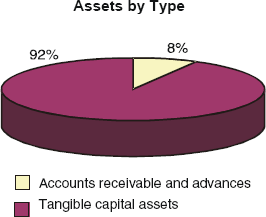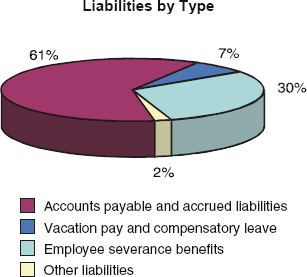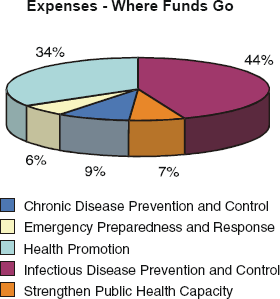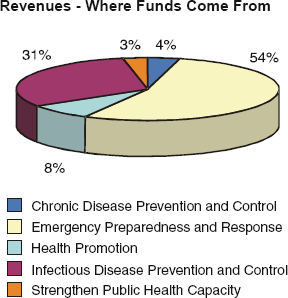Common menu bar links
Breadcrumb Trail
ARCHIVED - Public Health Agency of Canada
 This page has been archived.
This page has been archived.
Archived Content
Information identified as archived on the Web is for reference, research or recordkeeping purposes. It has not been altered or updated after the date of archiving. Web pages that are archived on the Web are not subject to the Government of Canada Web Standards. As per the Communications Policy of the Government of Canada, you can request alternate formats on the "Contact Us" page.
Section III – Supplementary Information
Management Priorities
In response to the Clerk of The Privy Council ![]() 2008-09 Public Service Renewal Action Plan, the Agency launched its 2009-10 Integrated Operational Planning process in the Fall 2008. The process was an Agency first and was designed to address all aspects of planning including internal services, internal resource allocations/reallocations and Strategic Review findings. In support of Strategic Review, the Agency conducted an international benchmarking study of public health organizations. This work will enable long term comparisons to ensure that the Agency continues to strive for public health excellence.
2008-09 Public Service Renewal Action Plan, the Agency launched its 2009-10 Integrated Operational Planning process in the Fall 2008. The process was an Agency first and was designed to address all aspects of planning including internal services, internal resource allocations/reallocations and Strategic Review findings. In support of Strategic Review, the Agency conducted an international benchmarking study of public health organizations. This work will enable long term comparisons to ensure that the Agency continues to strive for public health excellence.
As condition of Treasury Board Strategic Review approval letter, the Agency completed work commenced in the Fall 2008 by renewing the Agency’s PAA and finalizing a PMF. The renewed PAA provides more granularity to support future reviews. The Agency will continue to make refinements, improvements and integrate the PAA into its ongoing work agenda. As part of the improvement agenda, this DPR represents a transition to the Agency’s new PMF by providing baseline performance information from previous years.
The Agency developed an Integrated Risk Management Framework to support its work, including the implementation of the management response to the May 2008 OAG Report on the Surveillance of Infectious Diseases, and the MAF. As a management tool, the MAF has enabled the identification of Areas of Management that require improvement such as business continuity planning, information, asset and project management, procurement and citizen-focused service.
Lessons Learned
The overarching challenge in a public health environment is addressing business as usual in an environment where public health issues continue to impact regular monitoring and the fulfilment of plans and priorities as scarce resources are re-allocated internally. Capacity to address multiple competing demands remains a taxing issue and a risk.
Financial Highlights
| Condensed Statement of Financial Position for the year ended March 31 |
% Change | 2009 | 2008 |
|---|---|---|---|
| Assets | (3%) | 73,927,460 | 76,150,383 |
| Liabilities | (21%) | 143,571,401 | 181,365,470 |
| Equity | (34%) | (69,643,941) | (105,215,087) |
| Total | (3%) | 73,927,460 | 76,150,383 |
| Condensed Statement of Operations for the year ended March 31 |
% Change | 2009 | 2008 |
|---|---|---|---|
| Expenses | (1%) | 602,978,580 | 607,098,260 |
| Revenues | (46%) | 283,746 | 525,261 |
| Net Cost of Operations | (1%) | 602,694,834 | 606,572,999 |
Financial Highlights Charts
| Total assets were $73.9 million, a decrease of $2.2 million over the previous year’s total of $76.2 million. Tangible capital assets represented $68.0 million (92%), while accounts receivable and advances represented $5.9 million (8%) of total assets. |  |
 |
Total liabilities were $143.6 million, a decrease of $37.8 million over the previous year’s total of $181.4 million. Accounts payable and accrued liabilities represent the largest portion of liabilities at $88.6 million or 61% of total liabilities. |
| Total expenses for the Agency were $603 million. The Agency spent $265.1 million (44%) on Infectious Disease Prevention and Control, $204.9 million (34%) on Health Promotion, $55.7 million (9%) on Chronic Disease Prevention and Control, $44.0 million (7%) on Strengthen Public Health Capacity, and $33.3 million (6%) on Emergency Preparedness and Response. |  |
 |
The Agency receives most of its funding through annual Parliamentary appropriations. The Agency does however generate revenue from program activities. All cash received by the Agency is deposited to the Consolidated Revenue Fund (CRF) and all cash disbursements made by the Agency are paid from the CRF. The Agency’s total revenue was $283.7 million of which $73,200 is respendable. |
Financial Statements
The agency’s 2008-09 Financial Statements are available ![]() online.
online.
List of Supplementary Information Tables
All electronic supplementary information tables for the 2008-09 Departmental Performance Report can be found on the Treasury Board of Canada Secretariat’s website at: ![]() http://www.tbs-sct.gc.ca/dpr-rmr/2008-2009/index-eng.asp.
http://www.tbs-sct.gc.ca/dpr-rmr/2008-2009/index-eng.asp.
Table 1: Sources of Respendable and Non-Respendable Revenue
Table 2: User Fees/External Fees
Table 5: Details on Transfer Payment Programs (TPPs)
Table 7: Horizontal Initiatives
Table 8: Sustainable Development Strategy
Table 9: Green Procurement
Table 10: Response to Parliamentary Committees and External Audits
Table 11: Internal Audits and Evaluations
